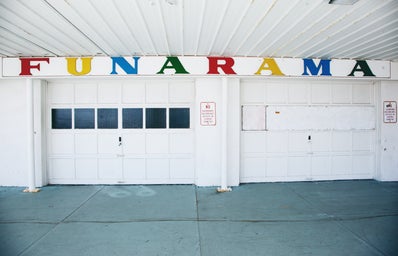I was probably too young the first time I saw The Shining. When I was ten, my parents made the questionable decision of letting me watch it on family movie night. But they quickly regretted it, because for weeks after my premature stay at the Overlook Hotel, my nightmares were haunted by hideous orange carpeting and twin teal dresses. I even refused to take baths because I was terrified of the “zombie lady” lurking behind my shower curtain. Last weekend, director Mike Flannigan brought my childhood nightmares back to the big screen with his sequel Doctor Sleep. Overall, Doctor Sleep is delightfully scary, but it disappoints because it isn’t innovating like the original.
Photo Credit: IMDB
Doctor Sleep, adapted from Stephens King’s 2013 novel of the same name, is centered on an adult Danny Torrance (portrayed by a grisly and woebegone Ewan McGregor). At 40 years old, Danny has traded in his big wheel for a bottle of whiskey. And after a nasty wake-up call, he decides to make a new life for himself in a small town in New Hampshire. Eventually, with the help of a friend, Dan sobers up and gets a job as an orderly in a hospice facility. There, he uses his psychic powers to comfort the dying as they go out with a whisper (hence the title of the film).
But Dan’s prosperity doesn’t last, and his world is again torn apart by “Redrum.” Abra, performed by the tenacious and fresh-faced Kyleigh Curran, is a teenage girl whose shine is staggeringly powerful. She is also Dan’s telepathic pen pal. When Abra is scarred after witnessing a gruesome murder committed by a convoy of soul-eating psychics called The Knot, she asks for Dan’s help to take them down. The rest of the film follows the duo as they try to take down The Knot and its gypsy queen Rose (Rebecca Ferguson).
Photo Credit: MovieNews.com
The film masterfully uses score and gore to create two-and-a-half hours of captivating fear. The hallmark of a good horror film is a strong soundscape, and Doctor Sleep has it in spades. The steady sound of a heartbeat that follows Danny wherever he goes is woven into the score perfectly. It drives the plot forward, while simultaneously pulling me into Dan’s fear. Additionally, the score itself is a compelling amalgamation of The Shining’s strong musical personality and modern horror’s chaotically layered arrangements. All this makes the settings are just as sinister as the people. The music made me anxious before the camera could turn the next blood-filled corridor.
Visually, the film is also a terrifying triumph in the horror genre. It takes the familiar ghouls from The Shining and gives them a CGI makeover to make them look more realistic and creepier than ever. Ten-year-old me probably would have left the theater in tears if she saw what they did to the shower ghost. The Knot’s soul-eating ritual also puts Doctor Sleep’s money where its gruesome mouth is. To stay alive, they must feast on the souls of children who shine by extracting their souls with agonizing pain. In one scene, The Knot stabs a child and slowly feeds on his futile struggle for life. The entire scene consists of unflinching close-ups of the remorseless hunger in The Knot’s eyes and the excruciating fear on the victim’s tear-streaked face. I was so genuinely horrified that I almost walked out of the theater, which, for a horror movie, is sort of a compliment. Unfortunately, despite Doctor Sleep’s attention to craft, its style is no different from the hours of horror I could be streaming right now on Netflix.
Photo Credit: WBUR
Doctor Sleep’s unoriginality is especially disappointing given the importance The Shining has within the horror genre. Kubrick’s original film reinvented the horror genre through confusing loneliness and eerie unexplained ghosts that haunt the technicolor caverns of the Overlook Hotel. But Doctor Sleep’s large cast and lack of mystery show that Flannigan has clearly misunderstood the suspenseful, psychological, horror that made The Shining iconic. The Shining‘s sequel without madness is just dull. Because of that, I struggled to understand what the point of the film is.
Photo Credit: IMDB
If it were a true sequel to the 80s cult classic, Flannigan would be pushing the boundaries of the horror genre as Kubrick did. I don’t expect Flannigan to be as innovative (or as eccentric) as his holiness, Stanley Kubrick, but an attempt from Flannigan to give us a new perspective on the horror genre would have strengthened the film. It would have proved that Doctor Sleep could find its own “shine” in the darkness of Kubrick’s massive shadow. Instead, Doctor Sleep feels like a bad crossover episode between The Shining and Flannigan’s 2017 horror series The Haunting of Hill House. It’s derivative, and obviously cashing in on the original’s cult following.
Doctor Sleep was an effective horror film but an unnecessary epilogue to Kubrick’s The Shining. When I finally got home after the movie, I wasn’t afraid to pull back my shower curtain.
Want to keep up with HCBU? Make sure to like us on Facebook, follow us on Instagram, check out our Pinterest board, and read our latest Tweets!



